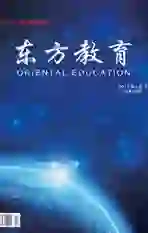On the Present Situation and Strategies of Chinese—English Translation of Wushu Terminologies
2017-06-29牛小鹏
牛小鹏
I. Introduction
The Chinese Wushu has a long history and strong national and cultural background into which the profound intelligence and the traditional philosophy of Chinese are poured .It is not only a kind of combat skills, but also an art fused with other Chinese cultural images, such as: philosophy, religion, strategy arts,medicine arts and so on. So, it formed a traditional item which has unique national style, and it can be called the essence of the Chinese nation. Chinese Wushu has rich content, various forms, unique styles, which are distinct features, and has the function of performing and self-cultivation.
II. The Present Situation of Chinese-English Translation of Wushu
Terminologies
Translation is an essential bridge which makes Chinese Wushu go abroad, but the translation of Wushu is a new branch of science, there are a lot of shortages at present, it mainly includes three conditions as follows:
2.1 Lacking Standards in Translation
In todays popular English publication and books about Wushu, there is a phenomenon that a lot of Wushu term translations are not unified. Mistranslation, ambiguity and translation just depends on literal meaning have interfered with the current and unified expression of English which have seriously, disturbed the international dissemination process of Wushu. According to the incomplete statistics, the most representative conceptual term “Wushu”, for example, have found as many as seven kinds of translation and they are multifarious. For example: (1)Wushu; (2) Chinese Wushu; (3)Traditional Chinese combat exercise; (4)Traditional Chinese boxing; (5)Kung fu;
2.2 Depending on Literal Meaning Excessively
The English dictionaries and reference books about Wushu is more than dozens, and they are the works of these people from different regions, different professions, different departments and different levels. Some of their translations about martial arts are formed by the “self-understanding”, “copying”, “rote”, and “wonderful but unusual fancy”.
For example: “lan que wei”, one of the classic action in Taijiquan, it has translations as follows: (1) grasp peacocks tail; (2) grasp the birds tail; (3) the sparrows tail.
III. Solutions to the Problems in Chinese-English Translation of
Wushu Terminologies
Due to the huge cultural differences between East and West in Translation, it is difficult to solve the questions perfectly. Here I list three solutions which maybe deal with the above questions to some extent.
3.1 Using Translation Principle of Domestication
Domestication: to replace the original cultural concept and values with the new concept and values in the objective language, especially to use the metaphors, images and ethnic colors in the objective language to replace the corresponding ones in the original language.
In Nidas opinion, whether a translation can arouse a similar feeling in the heart of an original reader and objective reader is an important criterion in translation. Translation is mainly serving for the objective to make them understand the original text information correctly to the largest extent. So it requires the translation to use many phrases that is easy to understand and is conformed with the language expression rules of the objective language, also the translation needs to be natured.
The two kinds of translation in the Chinese-English Wushu translation Dictionary are the reflection of the translation criteria.
For example: “kai men”, “pao jiang hu”:
3.2 Using Translation Principle of Foreignization
Foreignization translation refers to a translation strategy which deliberately breaks the target language convention by retaining the foreignness of the original. This translation theory requires translators to focus on the language features of the foreign culture and the target text should be source language since culture or the original author oriented. With the advent of the cultural globalization, the weak culture has always been subject to the control of the Strong culture, which brings the mutual penetration, mutual compatibility as well as mutual promotion between different cultures.
IV. Conclusion
The above is examples and analysis of using method of foreignization and domestication translation of Wushu. Foreignization translation method and domestication translation method supplement and complement each other in the text of translation; actually, it is a contradictory unity of opposites. So, it is considered as a bias if we just use pure alienation translation or pure domestication translation in the process of translating martial arts terms.
The translation of Wushu terminologies has just began and it needs a long time process of development and improvement, a process of learn, self-denial, accumulation and self-improvement. No matter teaching Wushu skills or translation Wushu scriptures, we can only effectively preserve and promote the ethnic culture and skill connotation of Chinese Wushu. By insisting our ethnic cultural basis and starting from the professional specialty of Wushu we can improve and retain the virtuous development of the standardization and internationalization of Wushu.
